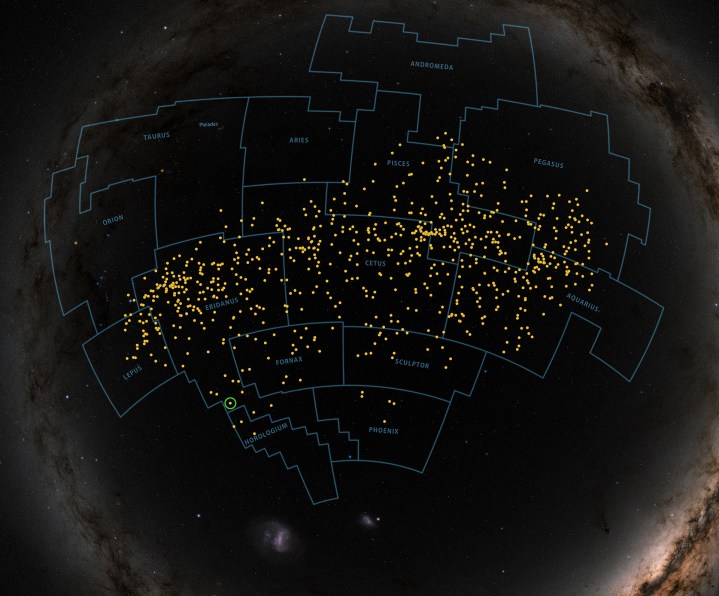
Astronomers using NASA’s Transiting Exoplanet Survey Satellite (TESS) have spotted an exciting young star called TOI 451, which has three hot planets in orbit around it.
TOI 451 is a lot like our sun, but while the sun is around 4.6 billion years old, this star is a relative baby at just 120 million years old. That means that studying it can teach us about how our solar system developed. It’s also around 95% the mass of the sun although it’s 12% smaller and emits only around two-thirds of the energy.
“This system checks a lot of boxes for astronomers,” said lead researcher Elisabeth Newton in a statement. “It’s only 120 million years old and just 400 light-years away, allowing detailed observations of this young planetary system. And because there are three planets between two and four times Earth’s size, they make especially promising targets for testing theories about how planetary atmospheres evolve.”
The planets orbiting TOI 451 sit very close to the star, with all three of them closer to TOI 451 than Mercury is to the sun. That means they are hot, with temperatures ranging from 2,200°F for the innermost to 840°F for the outermost. The system also has a pair of companion stars orbiting far beyond the planets.

TOI 451 and its planets reside in a “river of stars” called the Pisces-Eridanus stream which was only recently discovered. This stream is 1,300 light-years long, covering one-third of the sky, and is made up of stars that are less than 3% of the age of the universe. Researchers originally thought the stream was older because young stars can have dark spots like sunspots which cause fluctuations in their brightness. But by looking closer with TESS, researchers could see that the stream was actually made up of very young stars that spin quickly.
“Thanks to TESS’s nearly all-sky coverage, measurements that could support a search for planets orbiting members of this stream were already available to us when the stream was identified,” said Jessie Christiansen, a co-author of the paper. “TESS data will continue to allow us to push the limits of what we know about exoplanets and their systems for years to come.”
The discovered planets make for an excellent observation point as telescopes develop, with tools like the upcoming James Webb Space Telescope potentially even able to detect whether an exoplanet has an atmosphere.
“By measuring starlight penetrating a planet’s atmosphere at different wavelengths, we can infer its chemical composition and the presence of clouds or high-altitude hazes,” explained Elisa Quintana, another co-author. “TOI 451’s planets offer excellent targets for such studies with Hubble and the upcoming James Webb Space Telescope.”
The research is published in The Astronomical Journal.



